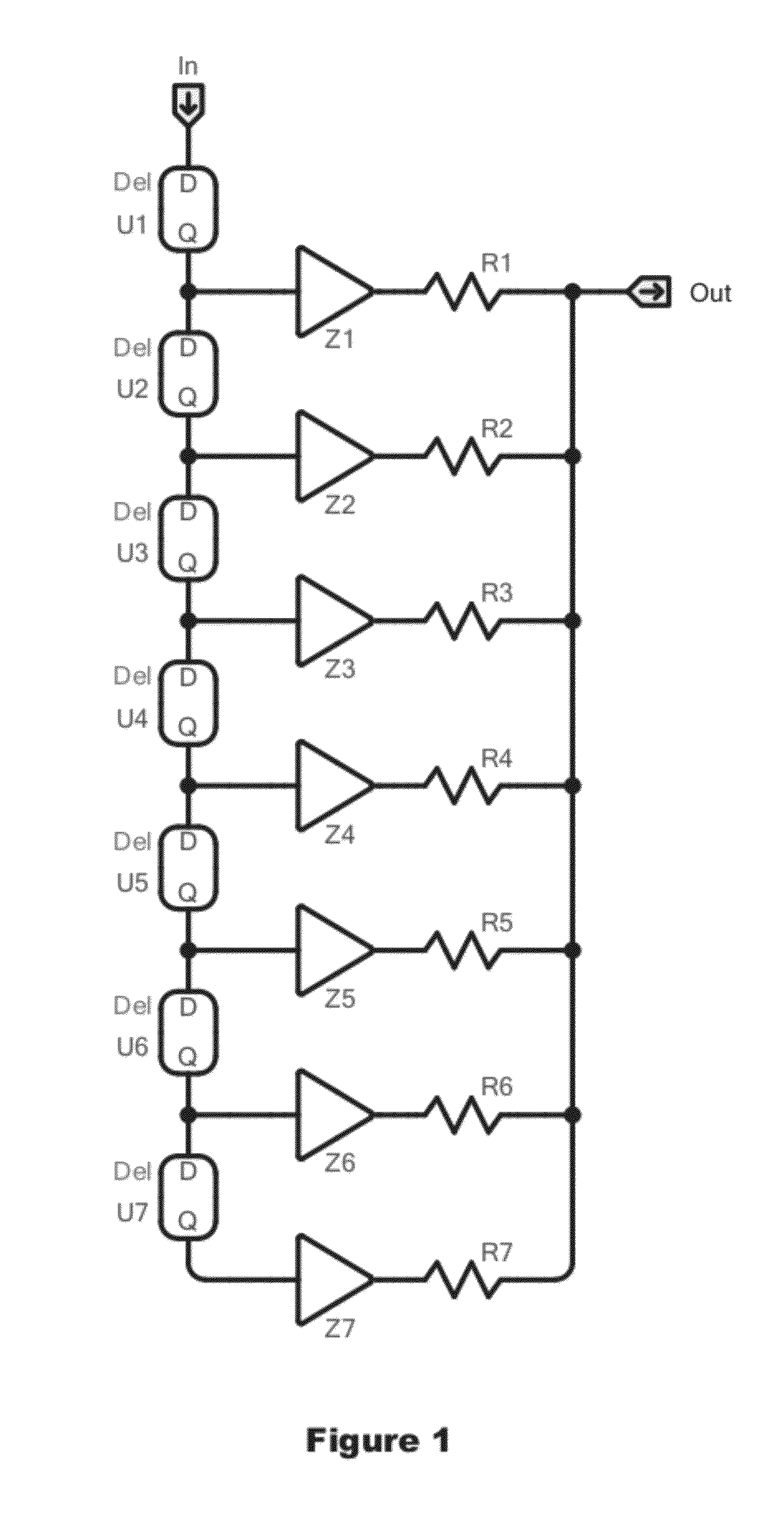FIR Filter with Reduced Element Count
a filter and element count technology, applied in filters, digital technique networks, instruments, etc., can solve the problem of limiting the use of the circuit of fig. 1, and requiring a negative resistance value which cannot be constructed directly
- Summary
- Abstract
- Description
- Claims
- Application Information
AI Technical Summary
Problems solved by technology
Method used
Image
Examples
Embodiment Construction
[0027]The present application describes a finite impulse response (FIR) filter having a differential output and capable of having negative coefficients using only the same number of resistors as in the non-differential case, e.g., approximately half the number of resistors as is commonly used in the prior art, and a method of designing such a filter.
[0028]One output signal of the differential output is created by using impedance devices corresponding to approximately one-half the Fourier coefficients that create a desired frequency response; the complement signal is created by using impedance devices corresponding to approximately the other half of the Fourier coefficients for the desired frequency response. Given the number of Fourier coefficients typically used in the art, using this number of impedance devices provides a signal that is substantially the same as if impedance devices corresponding to all of the coefficients were used. The method also uses a delay line that repeated...
PUM
 Login to View More
Login to View More Abstract
Description
Claims
Application Information
 Login to View More
Login to View More - R&D
- Intellectual Property
- Life Sciences
- Materials
- Tech Scout
- Unparalleled Data Quality
- Higher Quality Content
- 60% Fewer Hallucinations
Browse by: Latest US Patents, China's latest patents, Technical Efficacy Thesaurus, Application Domain, Technology Topic, Popular Technical Reports.
© 2025 PatSnap. All rights reserved.Legal|Privacy policy|Modern Slavery Act Transparency Statement|Sitemap|About US| Contact US: help@patsnap.com



